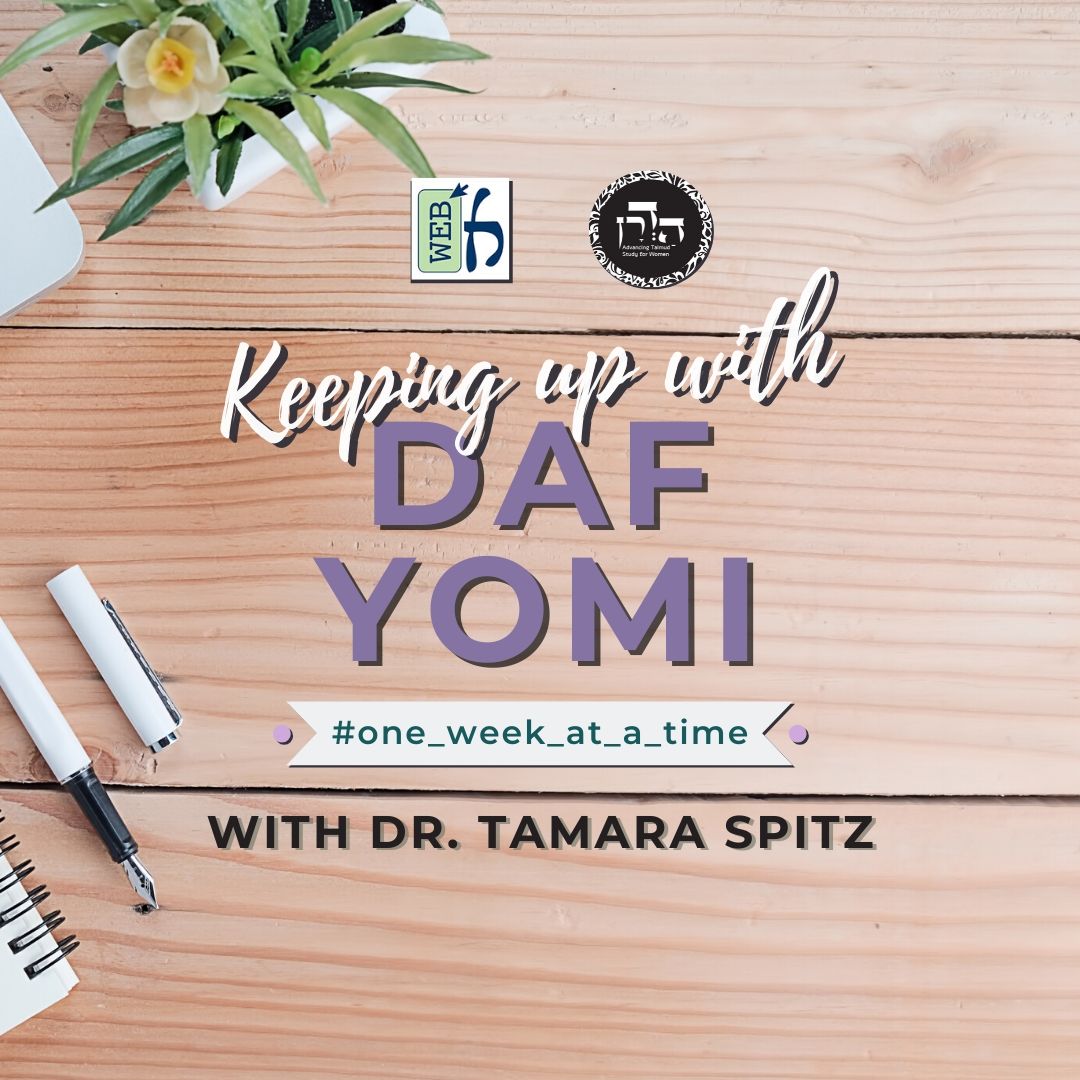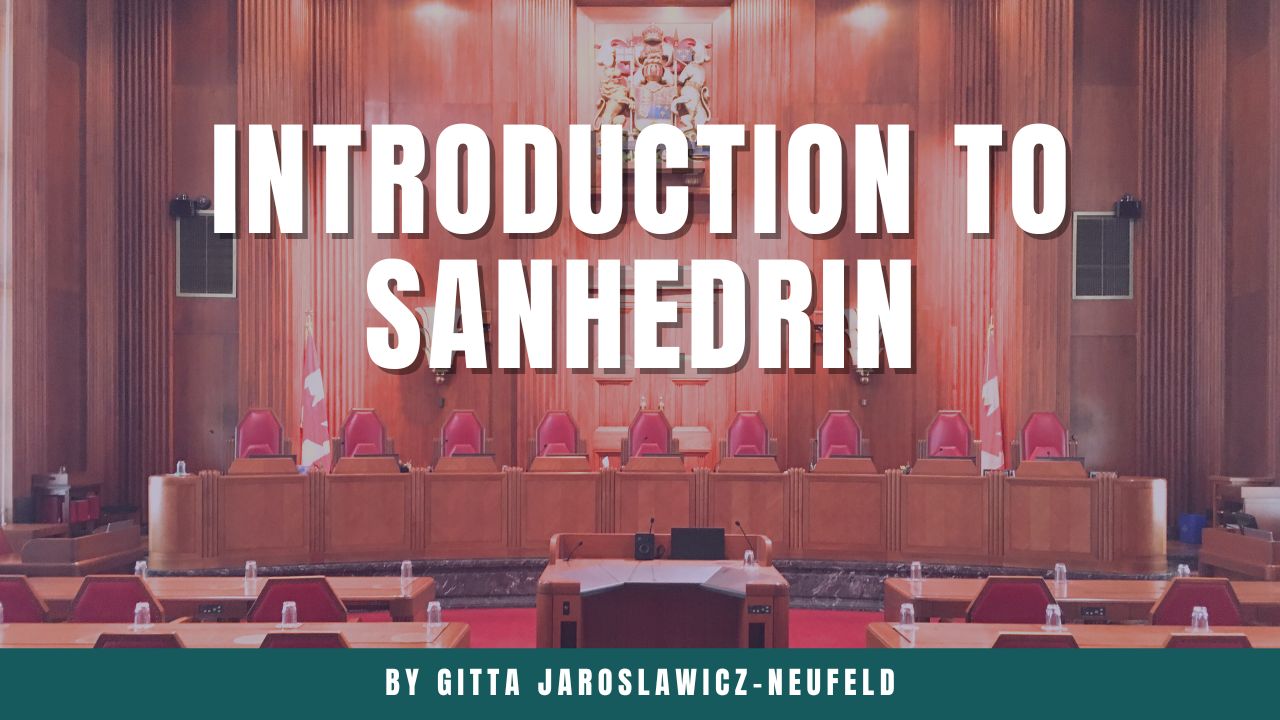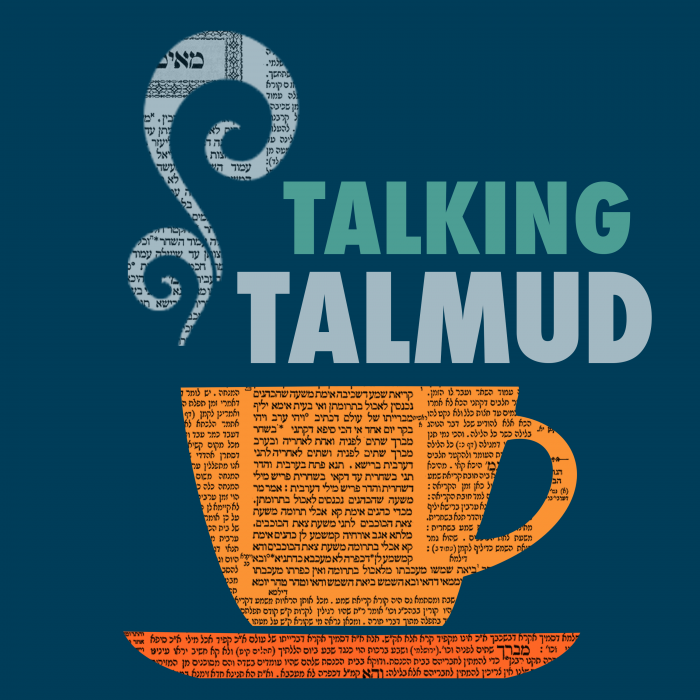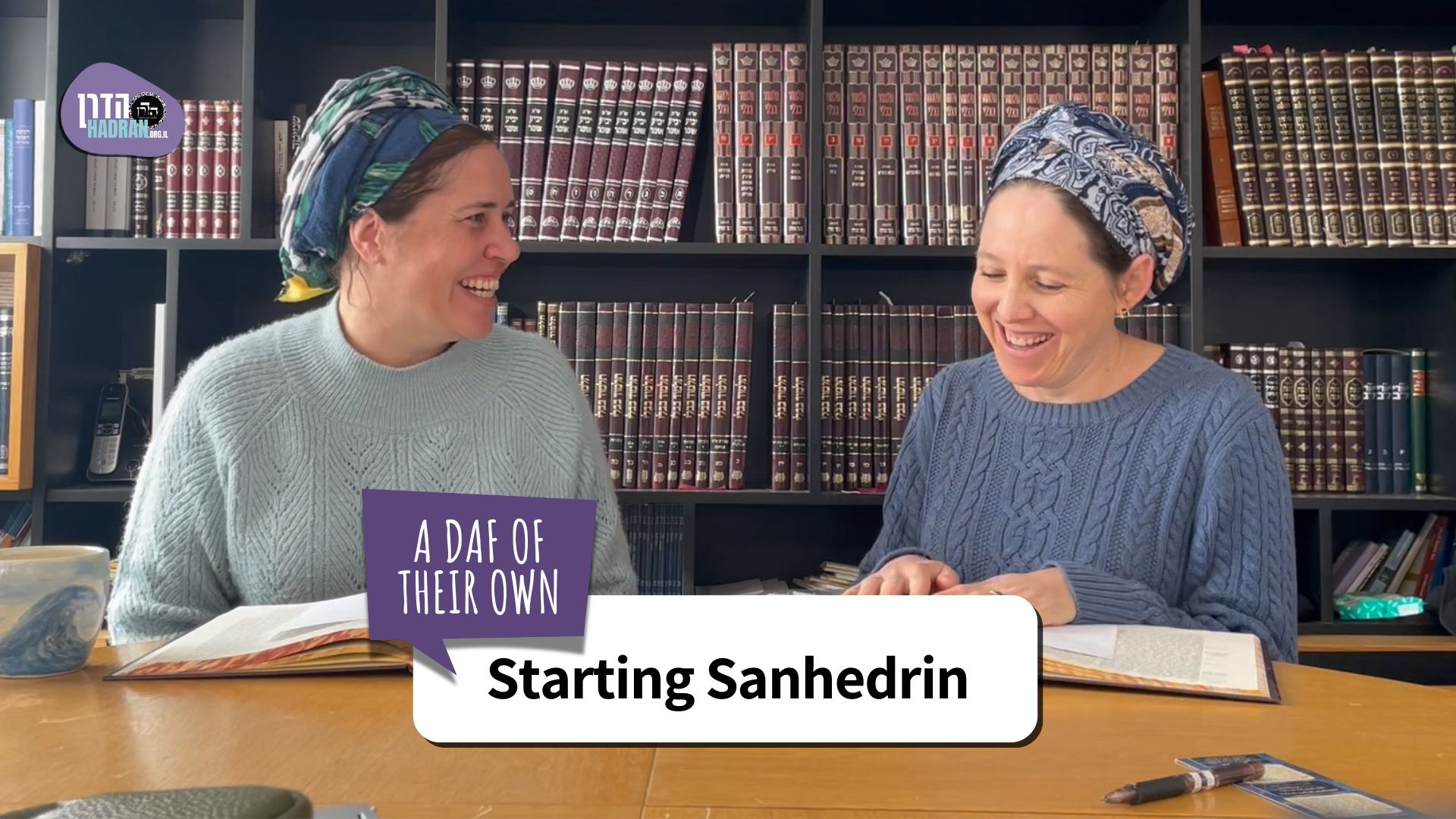Sanhedrin 2
מַתְנִי׳ דִּינֵי מָמוֹנוֹת – בִּשְׁלֹשָׁה, גְּזֵילוֹת וַחֲבָלוֹת – בִּשְׁלֹשָׁה, נֶזֶק וַחֲצִי נֶזֶק, תַּשְׁלוּמֵי כֶפֶל וְתַשְׁלוּמֵי אַרְבָּעָה וַחֲמִשָּׁה – בִּשְׁלֹשָׁה.
MISHNA: Cases concerning monetary law are adjudicated by three judges. Cases concerning robbery and personal injury are adjudicated by three judges. Cases concerning damage that one is responsible for because he or his property caused the damage are adjudicated by three judges as well. Likewise, cases concerning payment for half the damage, which is paid in the event that an ox whose owner has not been warned that it gored more than two times gores another animal (see Exodus 21:35); cases concerning payment of double the principal by a thief who was caught stealing (see Exodus 22:3); and cases concerning payment of four or five times the principal by a thief who slaughtered or sold a stolen ox or a lamb (see Exodus 21:37) are all adjudicated by three judges.
הָאוֹנֵס וְהַמְפַתֶּה וְהַמּוֹצִיא שֵׁם רַע – בִּשְׁלֹשָׁה, דִּבְרֵי רַבִּי מֵאִיר.
Cases concerning one who rapes or one who seduces a virgin girl, and must therefore pay the girl’s father fifty silver shekels (see Deuteronomy 22:29, Exodus 22:15); and cases concerning a defamer who falsely asserts that his wife was not a virgin when she married him, and brings false witnesses who testify that she committed adultery while betrothed to him and who must therefore pay the girl’s father one hundred silver shekels as well as receive lashes (see Deuteronomy 22:13–19): All of these are adjudicated by three judges; this is the statement of Rabbi Meir.
וַחֲכָמִים אוֹמְרִים: מוֹצִיא שֵׁם רַע – בְּעֶשְׂרִים וּשְׁלֹשָׁה, מִפְּנֵי שֶׁיֵּשׁ בּוֹ דִּינֵי נְפָשׁוֹת.
And the Rabbis say: Cases concerning a defamer are adjudicated by a court of twenty-three judges, which is the type of court authorized to judge cases of capital law, because this case includes the possibility of becoming a case of capital law. The husband brings witnesses that his wife committed adultery. If she is found guilty, she is liable to receive the death penalty. This punishment applies to the witnesses if they are exposed as conspiring witnesses.
מַכּוֹת בִּשְׁלֹשָׁה. מִשּׁוּם רַבִּי יִשְׁמָעֵאל אָמְרוּ: בְּעֶשְׂרִים וּשְׁלֹשָׁה.
Cases concerning the violation of prohibitions that render one liable to receive lashes are adjudicated by three judges. The Sages stated in the name of Rabbi Yishmael: Cases concerning lashes are adjudicated by twenty-three judges.
עִיבּוּר הַחֹדֶשׁ – בִּשְׁלֹשָׁה. עִיבּוּר הַשָּׁנָה – בִּשְׁלֹשָׁה, דִּבְרֵי רַבִּי מֵאִיר. רַבָּן שִׁמְעוֹן בֶּן גַּמְלִיאֵל אוֹמֵר: בִּשְׁלֹשָׁה מַתְחִילִין, וּבַחֲמִשָּׁה נוֹשְׂאִין וְנוֹתְנִין, וְגוֹמְרִין בְּשִׁבְעָה. וְאִם גָּמְרוּ בִּשְׁלֹשָׁה – מְעוּבֶּרֶת.
The intercalation of the month is performed by a panel of three judges. The intercalation of the year, meaning the decision to add an extra month to the year when necessary, is also decided by a panel of three judges; this is the statement of Rabbi Meir. Rabban Shimon ben Gamliel says: The deliberations begin with three judges, and they debate the matter with five judges, and they conclude the matter with seven judges, due to the significance of the decision. And Rabban Shimon ben Gamliel concedes that if they concluded the matter with only three judges, the intercalation is valid and it is a leap year.
סְמִיכַת זְקֵנִים וַעֲרִיפַת עֶגְלָה – בִּשְׁלֹשָׁה, דִּבְרֵי רַבִּי שִׁמְעוֹן. רַבִּי יְהוּדָה אוֹמֵר: בַּחֲמִשָּׁה. הַחֲלִיצָה וְהַמֵּיאוּנִין – בִּשְׁלֹשָׁה.
Both the laying of hands by the Sages and the breaking of the heifer’s neck in a case where a person was found murdered and it is not known who killed him (see Deuteronomy 21:1–9) are performed in front of a panel of three judges; this is the statement of Rabbi Shimon. Rabbi Yehuda says: These rituals are performed in front of five judges. Both ḥalitza, the ritual through which the yavam, a surviving brother of a married man who died without sons, frees the yevama, the widow, of her levirate bond in a case where the yavam does not wish to marry the yevama (see Deuteronomy 25:5–10), and the refusal of a girl before reaching majority to remain married to the man to whom her mother or brother married her off, are performed before a court of three judges.
נֶטַע רְבָעִי וּמַעֲשֵׂר שֵׁנִי שֶׁאֵין דָּמָיו יְדוּעִין – בִּשְׁלֹשָׁה. הַהֶקְדֵּשׁוֹת – בִּשְׁלֹשָׁה. הָעֲרָכִין הַמִּטַּלְטְלִים – בִּשְׁלֹשָׁה. רַבִּי יְהוּדָה אוֹמֵר: אֶחָד מֵהֶן כֹּהֵן.
The halakha concerning fruit of a fourth-year sapling and second-tithe produce is that they are to be brought to Jerusalem and eaten there. If this is impractical, the produce can be redeemed and the redemption money brought to Jerusalem, where it is used to purchase food and drink. Valuation of fruit of a fourth-year sapling or second-tithe produce in cases where their value is not known is performed by three judges. The valuation of consecrated property for purposes of redemption is performed by three judges, and the valuations that are movable property (see Leviticus 27:1–8) are performed by three judges. Rabbi Yehuda says: One of the three judges must be a priest.
וְהַקַּרְקָעוֹת – תִּשְׁעָה וְכֹהֵן. וְאָדָם – כַּיּוֹצֵא בָּהֶן.
And the valuation of consecrated land is performed by nine judges and, in addition, one priest. And the valuation of a person for the purpose of a vow is performed in a similar manner to that of land.
דִּינֵי נְפָשׁוֹת – בְּעֶשְׂרִים וּשְׁלֹשָׁה. הָרוֹבֵעַ וְהַנִּרְבָּע – בְּעֶשְׂרִים וּשְׁלֹשָׁה, שֶׁנֶּאֱמַר: ״וְהָרַגְתָּ אֶת הָאִשָּׁה וְאֶת הַבְּהֵמָה״, וְאוֹמֵר: ״וְאֶת הַבְּהֵמָה תַּהֲרֹגוּ״.
§ Cases of capital law are judged by twenty-three judges. An animal that copulated with a person and an animal that was the object of bestiality are judged by twenty-three judges, as it is stated: “And if a woman approaches any animal to lie with it, you shall kill the woman and the animal” (Leviticus 20:16), and it states: “And if a man lies with an animal, he shall be put to death and you shall kill the animal” (Leviticus 20:15). In cases of bestiality, the verse juxtaposes the execution of the animal to the execution of the person, and therefore the case of the animal is adjudicated in the same way as cases of capital law.
שׁוֹר הַנִּסְקָל – בְּעֶשְׂרִים וּשְׁלֹשָׁה, שֶׁנֶּאֱמַר: ״הַשּׁוֹר יִסָּקֵל וְגַם בְּעָלָיו יוּמָת״. כְּמִיתַת בְּעָלִים כָּךְ מִיתַת הַשּׁוֹר. הַזְּאֵב וְהָאֲרִי, הַדּוֹב וְהַנָּמֵר וְהַבַּרְדְּלָס וְהַנָּחָשׁ – מִיתָתָן בְּעֶשְׂרִים וּשְׁלֹשָׁה. רַבִּי אֱלִיעֶזֶר אוֹמֵר: כׇּל הַקּוֹדֵם לְהוֹרְגָן זָכָה. רַבִּי עֲקִיבָא אוֹמֵר: מִיתָתָן בְּעֶשְׂרִים וּשְׁלֹשָׁה.
Similarly, an ox that is to be stoned because it killed a person is judged by twenty-three judges, as it is stated: “But if the ox was wont to gore in time past, and warning has been given to its owner, but he did not guard it and it kills a man or a woman the ox shall be stoned and also its owner shall be put to death” (Exodus 21:29). From this verse it is derived that just as the manner of the death of the owner, so is the manner of the death of the ox. The same halakha applies in the case of a wolf or a lion, a bear or a leopard, or a cheetah, or a snake that killed a person: Their death is decreed by twenty-three judges. Rabbi Eliezer says these dangerous animals do not need to be brought to court; rather, anyone who kills them first merits the performance of a mitzva. Rabbi Akiva says: Their death is decreed by twenty-three judges.
אֵין דָּנִין לֹא אֶת הַשֵּׁבֶט, וְלֹא אֶת נְבִיא הַשֶּׁקֶר, וְלֹא אֶת כֹּהֵן גָּדוֹל, אֶלָּא עַל פִּי בֵּית דִּין שֶׁל שִׁבְעִים וְאֶחָד. וְאֵין מוֹצִיאִין לְמִלְחֶמֶת הָרְשׁוּת אֶלָּא עַל פִּי בֵּית דִּין שֶׁל שִׁבְעִים וְאֶחָד. אֵין מוֹסִיפִין עַל הָעִיר וְעַל הָעֲזָרוֹת אֶלָּא עַל פִּי בֵּית דִּין שֶׁל שִׁבְעִים וְאֶחָד. אֵין עוֹשִׂין סַנְהֶדְרָיוֹת לַשְּׁבָטִים אֶלָּא עַל פִּי בֵּית דִּין שֶׁל שִׁבְעִים וְאֶחָד.
§ The court judges cases involving an entire tribe that sinned, or a false prophet (see Deuteronomy 18:20–22), or a High Priest who transgressed a prohibition that carries a possible death sentence, only on the basis of a court of seventy-one judges, i.e., the Great Sanhedrin. And the king may bring the nation out to an optional war, i.e., a war that was not mandated by the Torah and is not a war of defense, only on the basis of a court of seventy-one judges. They may extend the city of Jerusalem or the courtyards of the Temple only on the basis of a court of seventy-one judges. And they may appoint a lesser Sanhedrin of twenty-three judges for the tribes only on the basis of a court of seventy-one judges.
אֵין עוֹשִׂין עִיר הַנִּדַּחַת, אֶלָּא עַל פִּי בֵּית דִּין שֶׁל שִׁבְעִים וְאֶחָד. אֵין עוֹשִׂין עִיר הַנִּדַּחַת בַּסְּפָר, וְלֹא שָׁלֹשׁ, אֲבָל עוֹשִׂין אַחַת אוֹ שְׁתַּיִם.
A city may be designated as an idolatrous city, i.e., a city whose residents all practice idolatry, and therefore according to Torah law all the residents must be killed and the city must be destroyed (see Deuteronomy 13:13–19), only in accordance with the ruling of a court of seventy-one judges. Additionally, the court may not designate a city as an idolatrous city if it is on the frontier, close to the borders of Eretz Yisrael, and three adjoining cities may not be designated as idolatrous cities. But the court may designate one city, or two adjoining cities, as idolatrous cities.
סַנְהֶדְרִין גְּדוֹלָה הָיְתָה שֶׁל שִׁבְעִים וְאֶחָד, וּקְטַנָּה שֶׁל עֶשְׂרִים וּשְׁלֹשָׁה. מִנַּיִן לַגְּדוֹלָה שֶׁהִיא שֶׁל שִׁבְעִים וְאֶחָד? שֶׁנֶּאֱמַר: ״אֶסְפָה לִּי שִׁבְעִים אִישׁ מִזִּקְנֵי יִשְׂרָאֵל״, וּמֹשֶׁה עַל גַּבֵּיהֶן. רַבִּי יְהוּדָה אוֹמֵר: שִׁבְעִים.
§ With regard to the number of judges in the different courts the mishna presents a halakhic midrash: The Great Sanhedrin was composed of seventy-one judges, and a lesser Sanhedrin was composed of twenty-three. From where is it derived that the Great Sanhedrin was composed of seventy-one judges? As it is stated: “Gather Me seventy men of the Elders of Israel, whom you know to be the Elders of the people and officers over them, and bring them into the Tent of Meeting, and they shall stand there with you” (Numbers 11:16), and together with Moses at the head of this body, there are a total of seventy-one. Rabbi Yehuda says: Moses was indeed at the head of the body, but he is not counted as part of the group. Consequently, a future Great Sanhedrin modeled after these Elders is to be composed of seventy judges.
וּמִנַּיִן לַקְּטַנָּה שֶׁהִיא שֶׁל עֶשְׂרִים וּשְׁלֹשָׁה? שֶׁנֶּאֱמַר: ״וְשָׁפְטוּ הָעֵדָה״, ״וְהִצִּילוּ הָעֵדָה״. עֵדָה שׁוֹפֶטֶת וְעֵדָה מַצֶּלֶת – הֲרֵי כָּאן עֶשְׂרִים.
And from where is it derived that a lesser Sanhedrin is composed of twenty-three judges? As it is stated: “And the congregation shall judge between the assailant and the avenger…and the congregation shall save the manslayer from the hands of the avenger” (Numbers 35:24–25). Therefore, there must be a congregation, which consists of at least ten judges, that judges the accused and attempts to convict him, and there must be a congregation, also consisting of at least ten judges, which attempts to save the accused by finding him innocent. Together, there are twenty judges here.
וּמִנַּיִן לְעֵדָה שֶׁהִיא עֲשָׂרָה? שֶׁנֶּאֱמַר: ״עַד מָתַי לָעֵדָה הָרָעָה הַזֹּאת״, יָצְאוּ יְהוֹשֻׁעַ וְכָלֵב.
Before proceeding to derive the requirement for the final three judges, the mishna clarifies: And from where is it derived that a congregation consists of at least ten men? As it is stated concerning the spies: “How long shall I bear with this evil congregation that keep complaining about me?” (Numbers 14:27) There were twelve spies; excluding Joshua and Caleb, who did not complain, there would be ten men who are called: A congregation. Accordingly, the verses describing a congregation that attempts to convict the accused and a congregation that attempts to acquit him together add up to twenty judges.
וּמִנַּיִן לְהָבִיא עוֹד שְׁלֹשָׁה? מִמַּשְׁמַע שֶׁנֶּאֱמַר ״לֹא תִהְיֶה אַחֲרֵי רַבִּים לְרָעֹת״ שׁוֹמֵעַ אֲנִי שֶׁאֶהְיֶה עִמָּהֶם לְטוֹבָה. אִם כֵּן, לָמָּה נֶאֱמַר ״אַחֲרֵי רַבִּים לְהַטֹּת״? לֹא כְּהַטָּיָיתְךָ לְטוֹבָה הַטָּיָיתְךָ לְרָעָה. הַטָּיָיתְךָ לְטוֹבָה – עַל פִּי אֶחָד, הַטָּיָיתְךָ לְרָעָה – עַל פִּי שְׁנַיִם.
And from where is it derived to bring three more judges to the court? From the implication of that which is stated: “You shall not follow a multitude to convict” (Exodus 23:2), I would derive that I may not convict a person on the basis of a majority but I should follow the majority to exonerate. If so, why is it stated in the same verse: “To incline after a multitude,” from which it can be understood that the majority is followed in all cases? In order to resolve the apparent contradiction it must be explained: Your inclination after the majority to exonerate is not like your inclination after the majority to convict. Your inclination after the majority to exonerate can result in a verdict by a majority of one judge. But your inclination after the majority to convict a transgressor must be by a more decisive majority of at least two. Therefore, the court must have at least twenty-two judges.
וְאֵין בֵּית דִּין שָׁקוּל, מוֹסִיפִין עֲלֵיהֶם עוֹד אֶחָד. הֲרֵי כָּאן עֶשְׂרִים וּשְׁלֹשָׁה.
And since there is a principle that a court may not be composed of an even number of judges, as such a court may be unable to reach a decision, therefore they add another one to them, and there are twenty-three judges here.
וְכַמָּה יְהֵא בָּעִיר וּתְהֵא רְאוּיָה לְסַנְהֶדְרִין? מֵאָה וְעֶשְׂרִים. רַבִּי נְחֶמְיָה אוֹמֵר: מָאתַיִם וּשְׁלֹשִׁים, כְּנֶגֶד שָׂרֵי עֲשָׂרוֹת.
And how many men must be in the city for it to be eligible for a lesser Sanhedrin? One hundred and twenty. Rabbi Neḥemya says: Two hundred and thirty, corresponding to the ministers of tens, as outlined by Moses and Yitro in the wilderness (Exodus, chapter 18). That is to say, each member of the Sanhedrin can be viewed as a judge with responsibility for ten residents. If there are not enough men in the city to enable this calculation, it would not be honorable to appoint a Sanhedrin, as their members will each preside over less than the minimum of ten residents.
גְּמָ׳ אַטּוּ גְּזֵילוֹת וְחַבָּלוֹת לָאו דִּינֵי מָמוֹנוֹת נִינְהוּ? אָמַר רַבִּי אֲבָהוּ: מָה הֵן קָתָנֵי, מָה הֵן דִּינֵי מָמוֹנוֹת? גְּזֵילוֹת וְחַבָּלוֹת. אֲבָל הוֹדָאוֹת וְהַלְוָאוֹת – לָא.
GEMARA: The mishna states that cases of monetary law are adjudicated by three judges, and that cases of robbery and personal injury must also be adjudicated by three judges. The Gemara asks: Is that to say that cases of robbery and personal injury are not cases of monetary law? Obviously they are; why did the mishna delineate them separately? Rabbi Abbahu says: The mishna teaches this clause employing the style: What are these, meaning that the expression: Cases of monetary law, is a description of a category, followed by the specification. Accordingly, the mishna should be read as follows: What are these cases of monetary law that are adjudicated by three judges? Cases of robbery and personal injury. But cases of admissions, where one party admits that he owes another money, and cases of loans that were not repaid are not included in this halakha.
וּצְרִיכָא, דְּאִי תְּנָא דִּינֵי מָמוֹנוֹת – הֲוָה אָמֵינָא דַּאֲפִילּוּ הוֹדָאוֹת וְהַלְוָאוֹת. תְּנָא גְּזֵילוֹת וַחֲבָלוֹת. וְאִי תְּנָא גְּזֵילוֹת וַחֲבָלוֹת, וְלָא קָתָנֵי דִּינֵי מָמוֹנוֹת – הֲוָה אָמֵינָא הוּא הַדִּין דַּאֲפִילּוּ הוֹדָאוֹת וְהַלְוָאוֹת. וְהַאי דְּקָתָנֵי גְּזֵילוֹת וַחֲבָלוֹת – מִשּׁוּם דְּעִיקַּר שְׁלֹשָׁה דִּכְתִיבִי, בִּגְזֵילוֹת וַחֲבָלוֹת כְּתִיבִי.
And this specification is necessary, as had the tanna taught only that cases of monetary law are adjudicated by three judges, I would say that this applies even to cases of admissions and loans. Therefore, to avoid this misunderstanding, he taught: Cases of robbery and personal injury, in order to clarify that only they are included in the halakha. And had he taught only cases of robbery and personal injury and had not taught cases of monetary law, I would say that the same is true even with regard to admissions and loans, that they are adjudicated in the same manner. And I would understand this fact, that the mishna teaches specifically cases of robbery and personal injury, by saying that these are mere examples and that the mishna mentions them because in the primary cases in which the requirement for three judges is written in the Torah, it is written with regard to cases of robbery and personal injury.
גְּזֵילוֹת, דִּכְתִיב: ״וְנִקְרַב בַּעַל הַבַּיִת אֶל הָאֱלֹהִים״. חֲבָלוֹת – מָה לִי חָבַל בְּגוּפוֹ, מָה לִי חָבַל בְּמָמוֹנוֹ! תְּנָא: מָה הֵן דִּינֵי מָמוֹנוֹת? גְּזֵילוֹת וַחֲבָלוֹת. אֲבָל הוֹדָאוֹת וְהַלְוָאוֹת – לֹא.
The Gemara explains this assertion. With regard to cases of robbery, as it is written with regard to a bailee who accepted a deposit from another and then claims that it was stolen: “The owner of the house shall come near the court [ha’elohim], to see whether he has not put his hand upon his neighbor’s property” (Exodus 22:7). And with regard to cases of personal injury, they are adjudicated in the same manner as cases of robbery, because what difference is there to me if another injured one’s body and what difference is there to me if another injured one’s property? Therefore, in order to clarify that the halakha applies only to cases of robbery and injury, the tanna taught: What are these cases of monetary law? Cases of robbery and personal injury. But this halakha does not apply with regard to cases of admissions and loans.
וּלְמַאי? אִילֵּימָא דְּלָא בָּעֵינַן שְׁלֹשָׁה, וְהָאָמַר רַבִּי אֲבָהוּ: שְׁנַיִם שֶׁדָּנוּ דִּינֵי מָמוֹנוֹת, לְדִבְרֵי הַכֹּל אֵין דִּינֵיהֶם דִּין.
The Gemara asks: And with regard to which halakha are cases of admissions and loans unlike cases of robbery and injury? If we say that we do not need a court of three judges to adjudicate such cases, but doesn’t Rabbi Abbahu say: With regard to a court of two judges that adjudicated cases of monetary law of any type, which would include cases of admissions and loans, everyone agrees that their judgment is not a valid judgment, as a court with fewer than three judges is invalid?
אֶלָּא: דְּלָא בָּעֵינַן מוּמְחִין.
The Gemara answers: This is not the difference between the categories; rather, the difference is that for cases of admissions and loans we do not require expert, ordained judges who have studied extensively and received permission to judge; any three laymen can serve as a court for these types of cases. The mishna singled out cases of robbery and personal injury in order to indicate that for those cases expert judges are necessary.
מַאי קָסָבַר? אִי קָסָבַר עֵירוּב פָּרָשִׁיּוֹת כָּתוּב כָּאן, לִיבְעֵי נָמֵי מוּמְחִין. וְאִי קָסָבַר אֵין עֵירוּב פָּרָשִׁיּוֹת כָּתוּב כָּאן, שְׁלֹשָׁה לְמָה לִי?
The Gemara clarifies: What does the tanna hold? If he holds that a merging of Torah portions is written here, then he should also require expert judges for cases of admissions and loans. The passage from which the halakha requiring three judges is derived (Exodus 22:6–8) discusses several different halakhot. According to the understanding that these portions should be considered as merged, they are interpreted to indicate equivalence between those halakhot. And if he holds that there is no merging of Torah portions written here, meaning that the halakhot are to be derived only from verses that discuss them directly, then why do I need three judges for admissions and loans? The requirement for three judges is derived from the repetition of the word elohim three times in the context of cases of robbery and personal injury.
לְעוֹלָם קָסָבַר: עֵירוּב פָּרָשִׁיּוֹת כָּתוּב כָּאן, וּבְדִין הוּא דְּלִיבְעֵי נָמֵי מוּמְחִין. וְהַאי דְּלָא בָּעֵינַן מוּמְחִין – מִשּׁוּם דְּרַבִּי חֲנִינָא, דְּאָמַר רַבִּי חֲנִינָא: דְּבַר תּוֹרָה, אֶחָד דִּינֵי מָמוֹנוֹת וְאֶחָד דִּינֵי נְפָשׁוֹת בִּדְרִישָׁה וּבַחֲקִירָה,
The Gemara answers: Actually, the tanna holds that a merging of Torah portions is written here, and by right he should have required expert judges to judge cases of admissions and loans as well. And this fact, i.e., that we do not require expert judges for these cases, is due to the reasoning of Rabbi Ḥanina, as Rabbi Ḥanina says: By Torah law, both cases of monetary law and cases of capital law require inquiry and interrogation of witnesses in order to conclusively determine the time, place, and circumstance of the incident, with the purpose of finding any possible contradiction in the witnesses’ testimony.


























